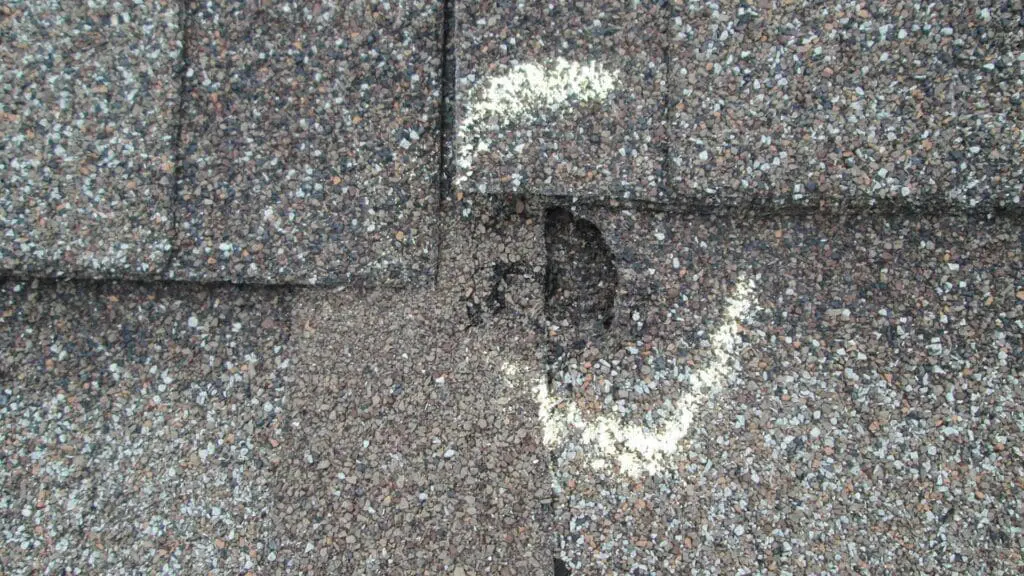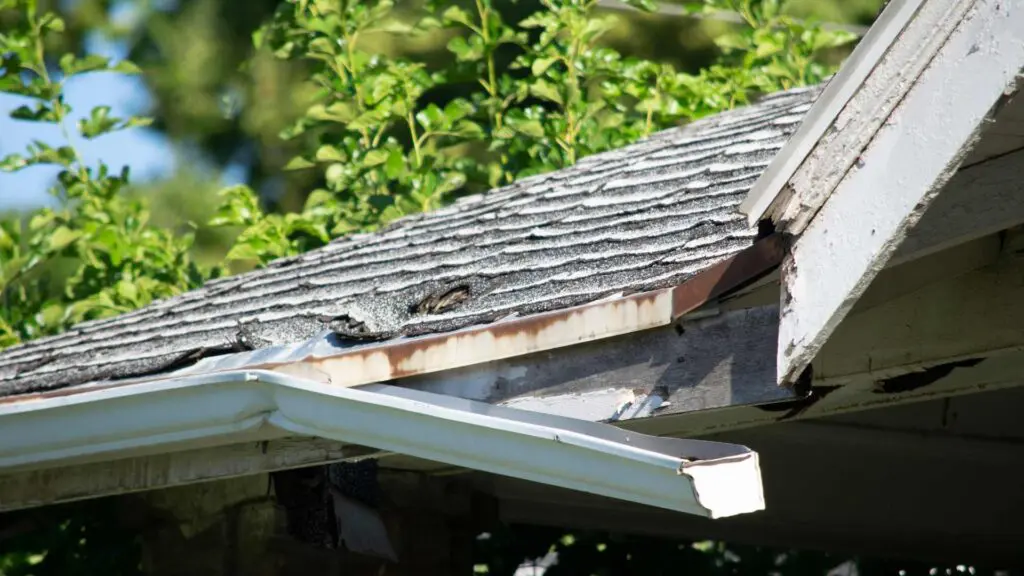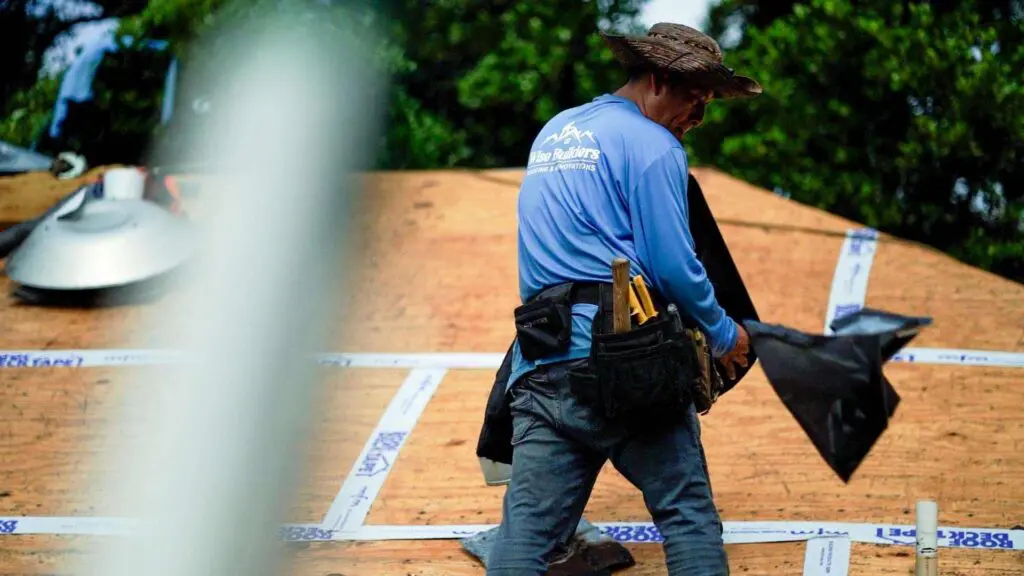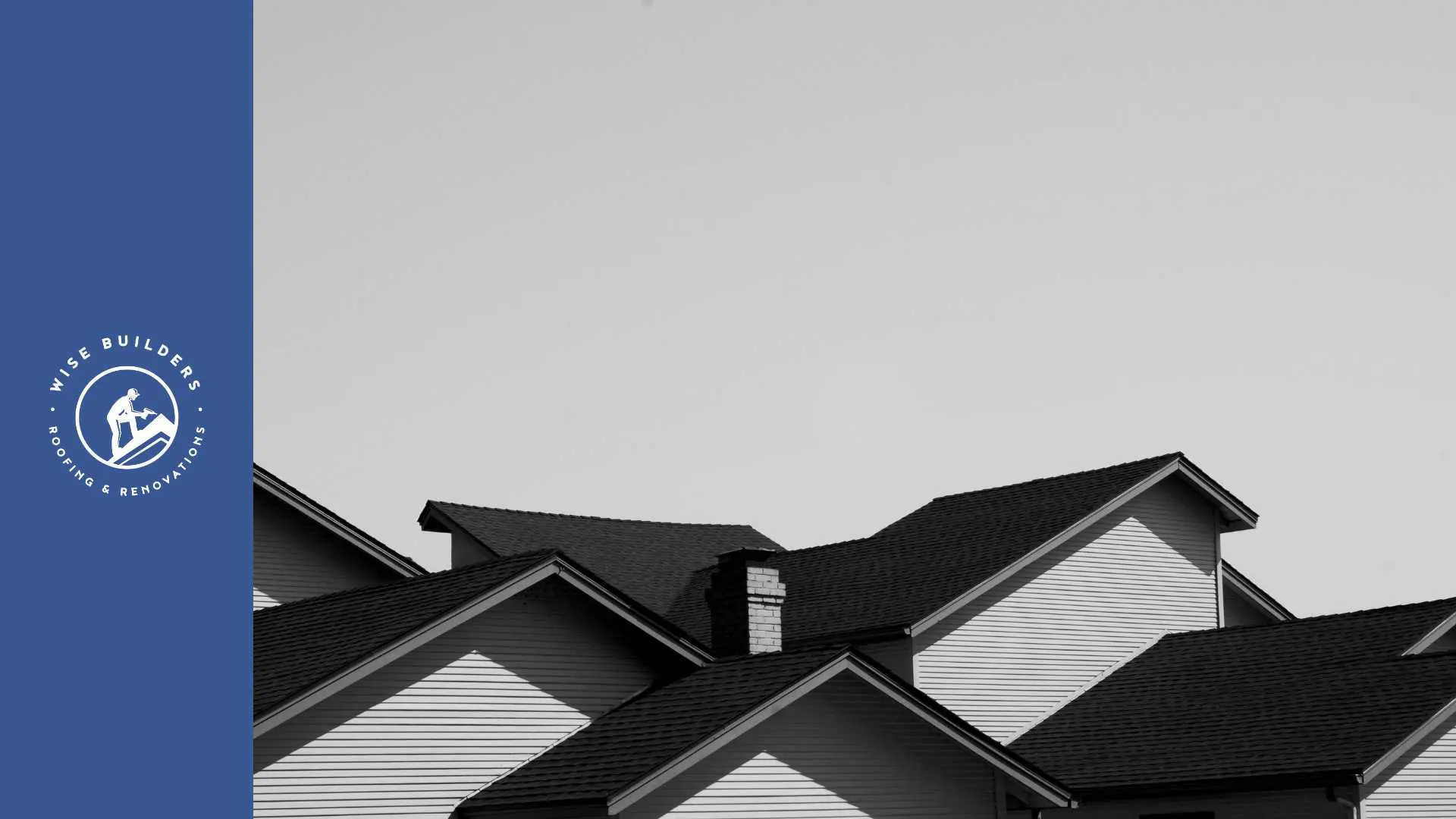Key Highlights
- Recognizing when your roof needs replacement is crucial for maintaining your home’s safety and value.
- Several signs, such as missing shingles, leaks, and sagging, indicate it’s time for a new roof.
- Understanding the age and type of your current roof can help you anticipate its replacement needs.
- Proper roof replacement involves selecting suitable materials, finding a qualified contractor, and preparing your home for the project.
- Regular maintenance can extend the lifespan of your roof and prevent costly repairs.
Introduction
As a homeowner, knowing how important a strong roof is can make a big difference in reducing energy bills. Your roof protects your home from bad weather, so it’s important to know when it needs to be replaced. This guide will share helpful signs that show it’s time for a new roof. We will also talk about what affects roof replacement cost, how homeowner’s insurance plays a part, and the steps you should take for a successful roof replacement project.

Understanding Roof Lifespan and Material Durability
Different roofing materials last for different amounts of time, which affects how often you need to replace them. The lifespan of your roof can be influenced by things like weather, how you take care of it, and how well it was installed in the first place.
Asphalt shingles, a common and affordable choice, are often considered a good choice for budgets, usually last around 15 to 30 years. Metal roofing is very durable and can last more than 50 years. Slate tiles are known for lasting a long time and looking great, with a lifespan of over a century if cared for properly. Knowing how long your roof material lasts can help you plan when you might need to replace it.
Common Roofing Materials Used in Mobile, AL
Homeowners in Mobile, AL, often choose roofing materials that can handle the challenges of the local climate. This includes dealing with high humidity, heavy rain, and strong winds.
Asphalt shingles are a popular pick because they are affordable and easy to install. Many people also like metal roofing. It is becoming popular for its strength, energy efficiency, and ability to resist harsh weather. Metal roofing is a strong choice for the coastal conditions. Some homeowners choose tile roofing. It looks nice, lasts a long time, and can withstand high winds, even if it’s not as common as asphalt shingles or metal roofing.

Average Lifespan of Residential Roofs
Understanding the average lifespan of common roofing materials can help homeowners proactively plan for replacements and avoid unexpected issues.
Regular inspection and timely repairs are essential for maximizing your roof’s life, regardless of the material. Proper installation and ongoing care can significantly influence the actual lifespan of your roof.
| Roofing Material | Average Lifespan |
| Asphalt Shingle Roof | 15-30 years |
| Metal Roofing | 40-70 years |
| Slate Tiles | 100+ years |
Recognizing the Signs of Roof Wear and Tear
Roofs can wear out because they face bad weather every day. It’s important to watch for signs that your roof needs help. If you find and fix these issues quickly, you can prevent bigger problems later.
Some signs of damage are easy to see, while others are hidden. Knowing about both outside damage and how the inside looks is key to understanding your roof’s health.

Visible Damage: Cracks, Breaks, and Missing Shingles
One clear sign of damage is when you see wear on your roof. By checking your roof often, you can spot issues early.
Missing shingles are a strong signal that your roof needs help. These gaps can let water in, causing water damage and leaks. Cracked or broken shingles show that your roof is hurt and not as strong. Checking your gutters often can show if there are loose or broken roof shingles. This gives you a good idea of your roof’s health.
- Missing shingles
- Cracked or broken shingles
- Granules in gutters

Interior Signs: Leaks and Water Damage
Your home’s inside can show signs if your roof is in trouble. You need to watch for these signs, as they can mean roof damage.
Water damage on your ceiling or attic floor often means there is a roof leak that has caused severe damage. You might see stains that look like discolored patches or even dripping water. Pay attention to any signs of moisture or mold. Mold growth can be harmful to your health and shows there is too much moisture, often from a leaky roof.
- Water stains on ceilings or walls
- Dampness or musty smells
- Peeling paint or wallpaper
The Impact of Severe Weather on Your Roof
Living in a place where hurricanes, storms, and bad weather happen often means you need to pay close attention to how your roof is. Strong natural forces can harm even the toughest roofs. It is important to fix any damage from severe weather as soon as possible.
How Hurricanes and Storms Affect Roof Integrity
Hurricanes and strong storms can seriously harm roofs. This can cause big issues that affect their strength.
These storms come with strong winds, heavy rain, and sometimes hail. High winds can tear off shingles and move roofing materials around. This can create gaps where water can get in. Heavy rain can fill up gutters and lead to water collecting on the roof. This raises the chance of leaks. In serious situations, you may need a full roof replacement to make it safe and working again.
Addressing Wind and Hail Damage
Wind and hail damage can vary a lot. It can be small cosmetic issues or serious problems with the structure. The first step is to check how bad the damage is to decide what to do next.
Wind damage can show up as missing or broken shingles, raised flashing, or shifted roof decking. Look at your roof closely after a windstorm for these signs. Hail damage can look like dents or cracks in shingles. This can make it harder for them to protect your home. Sometimes, minor repairs can fix small issues. But if there is a lot of wind or hail damage, you might need a full replacement to keep your roof working well and to protect your home.


Preparing for a Roof Replacement
Preparing for a full roof replacement needs careful planning. You should think about different factors.
First, check the condition of your current roof. Next, look into suitable roofing materials. Also, make a budget for the roof replacement cost. Finally, find a good roofing contractor. Taking these steps will help the project run smoothly and lead to a successful outcome.
Assessing Your Current Roof’s Condition
Conducting a careful roof inspection is very important before replacing it. This check gives you key details to plan the project.
Look for signs of damage, especially if your roof is nearing the end of its lifespan. These can include missing, cracked, or curled shingles. Also, check for leaks, water damage, or moss growth. These signs can mean there are bigger problems. If your roof has extensive damage, getting a full roof replacement might be the best choice. But, if the damage is only in certain areas and the roof is in good condition, then repairs may be enough.
Gathering Necessary Equipment and Resources
Once you decide to replace your roof, it’s important to get the right tools and supplies. This helps to make the replacement go smoothly.
Getting the right type of materials for roofing is key. Think about how strong they are, how well they save energy, and how good they look when you pick them. Work with a skilled contractor. They can give you a good estimate, help get the needed permits, and manage the whole job. Remember, replacing a roof takes a lot of work and needs special tools. It is best to let experienced workers handle this job to stay safe and do it well.

Step-by-step Guide to Roof Replacement
Replacing a roof is a project that needs good planning and careful work. Homeowners must know each step of the roof replacement process. This is important whether they decide to do it themselves or hire someone.
Choosing the right materials and finding a good contractor are both very important. Paying attention to every detail at each stage helps ensure that the replacement goes well. This way, homeowners can get a strong and lasting roof.

Step 1: Choosing the Right Roofing Material
Choosing the right roofing materials is a very important first step in replacing your roof. The best material for your house depends on a few key factors.
These factors include the type of roof, its slope, and your budget. You should also think about the style of your home and pick a material that matches its look. Asphalt shingles are among the most common roofing materials and are a common choice because they are cost-effective. On the other hand, metal roofing is known for its strength and long life. Talk to your roofing contractor to find the best option that meets your needs and preferences.

Step 2: Finding a Qualified Contractor in Mobile, AL
Choosing a good roofing contractor is important for a successful roof replacement. You should think about their reputation, years of experience, and how they handle roofing projects.
Look for contractors that are licensed and insured in Mobile, AL. This will help make sure they follow local rules and protect your interests. Check online reviews and ask friends, family, or neighbors for recommendations to see how reliable the contractor is. Ask how many years of experience they have, the size of their team, and if they know about the type of roof you have.
Step 3: Planning and Scheduling the Project
Once you pick a contractor, work together to create a detailed plan and schedule for your project. This organized way helps reduce disruptions and makes sure everything finishes on time.
Talk about the timeline for the project. Go over the expected start and finish dates. Know the payment schedule and the terms to avoid surprises later. Consider possible weather delays, which are typical in Mobile, AL, and allow for some flexibility in your schedule. Good communication and a clear plan help avoid confusion and lead to a successful roof replacement.

Step 4: Preparing Your Home for Replacement
Preparing your home before the roofing team comes is important for safety and a smooth replacement process.
- Move vehicles away from the work area to avoid damage.
- Trim any tree branches near the roof to reduce debris and hazards.
- Talk with your contractor. Ask if you need to cover any belongings inside your home as a precaution.
- For large projects like roof replacements, be ready for a lot of debris. Plan for proper disposal or look into renting a dumpster.
Step 5: The Replacement Process Explained
Understanding how roof replacement happens helps you know what to expect. This process starts with the workers taking off the old roof. They will remove shingles, flashing, and any damaged layers below using a roofing shovel. Then, they will check the roof deck. If it needs it, they will fix or change it to make sure it is strong.
Once the deck is good, they will put in a water-resistant barrier. After that, the new roof installation begins. They will take care to ensure proper flashing and ventilation. When everything is done, they will clean up the area, leaving your property neat.
The labor costs for roof replacement usually depend on how complicated the project is, the materials you choose, and the labor rates in your area.


Maintenance Tips to Extend Your Roof’s Lifespan
By using simple and effective maintenance practices, you can make your roof last much longer. This helps to lower the chances of needing a new roof too soon. Regular maintenance keeps your roof strong and can help you avoid expensive repairs later on. Spending a little time and money on care today can save you a lot in the future. When you take care of your roof, you are also protecting your home and making it last longer.
Regular Inspections and Maintenance Schedules
It is a good idea to get your roof checked by a professional at least once a year. Yearly checks can spot small issues before they turn into big problems.
During these checks, experts can find early signs of damage like loose or broken shingles, cracked flashing, or clogged gutters along the roof line. Setting up a regular maintenance plan can keep your roof lasting longer. By removing debris, cleaning out gutters, and trimming branches that hang over, you can stop moisture and buildup from causing damage. This can help extend the life of your roof.

Immediate Action on Minor Repairs
Fixing minor roof repairs quickly is a smart way to avoid bigger issues later. When you take action on time, you help your roof last longer.
What looks like a simple repair, like a missing shingle or a small leak, can turn into a bigger problem if you ignore it. This can lead to serious and expensive damage. Replacing damaged shingles, sealing leaks, and handling signs of wear and tear, including addressing metal flashing issues, are important for keeping your roof strong. Remember, taking quick action on minor repairs saves you money over time.
Conclusion
In conclusion, knowing the signs that mean your roof needs to be replaced can help you avoid expensive damage later. Look for things like visible cracks, missing shingles, and leaks inside your home. It’s important to understand these signs. When you get ready for a roof replacement, check the state of your current roof, pick the right materials, find a good contractor, and plan the job. To make your new roof last longer, make sure to get regular inspections and fix any problems right away. For trustworthy roof replacement services, think about Wise Builders. If you want to protect your home, ask for quotes today.

Why Pick Wise Builders For Roof Replacement
When you choose Wise Builders Roofing and Renovations for your roof replacement, you are picking a company that cares about getting great results. We focus on quality and making sure you are happy with our work in every step we take.
We only use high-quality materials from reliable makers to build a strong roof that can handle Mobile’s weather. We have built hundreds of fortified roofs. Our team is made up of skilled professionals who are committed to providing excellent work, ensuring you are fully satisfied. Besides using great materials and offering good service, we also enjoy clear communication and being open throughout the whole process. We are highly rated by the Better Business Bureau and Nextdoor and we have 5 stars on, Google, Trust Index and Facebook. Follow our social accounts: YouTube, Twitter, Instagram
Frequently Asked Questions
How often should I have my roof inspected?
A roof inspection is a good idea at least once a year. This helps check the roof’s condition and find any problems early. It also helps make your roof last longer. You should consider your roof’s age, the local climate in Mobile, AL, and any visible damage or leaks when deciding how often to inspect. Regular maintenance and fixing minor repairs right away can help keep your roof in good condition for many years.
Can I replace my roof myself or should I hire a professional?
While replacing your roof by yourself may look tempting, it’s better to hire a professional. This job is complex and can be dangerous. Roofing needs special skills, tools, and experience. If you try to do it yourself, you might make costly mistakes or put yourself in danger. It is best to trust the experts to make sure your roof replacement goes safely and successfully.
What are the signs that indicate a roof needs to be replaced?
Signs that indicate a roof needs replacement include curling or missing shingles, water stains on ceilings, light coming through the roof boards, and visible roof sagging. If your roof is over 20 years old or has multiple issues, it’s time to consider a replacement for better protection.









